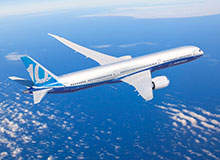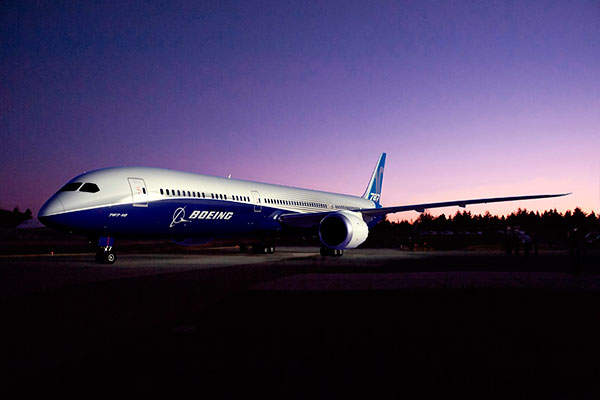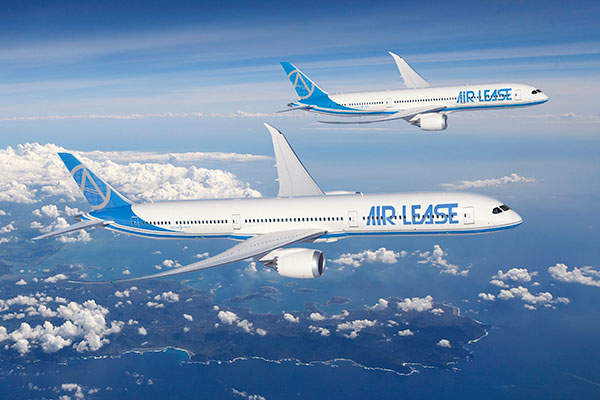The Boeing 787-10 Dreamliner, the latest and longest member in the Boeing 787 family of commercial aircraft, was officially launched at the 2013 Paris Air Show in Le Bourget, France, in June 2013.
The new Dreamliner can reach a distance of 12,964km, covering more than 90% of the world’s twin-aisle routes. It is 25% more fuel-efficient compared with other aircraft of similar size.
The 787-10 Dreamliner completed its first flight in March 2017 and the delivery of the first aircraft was made in March 2018.
Orders and deliveries of the 787-10 Dreamliner
A total of 173 orders were placed, of which 24 787-10 were delivered as of April 2019. An unidentified customer placed orders for 12 787-10 aircraft in December 2008.
In February 2010, United Airlines placed orders for 14 aircraft and up to eight aircraft have been delivered as of November 2018. Air France-KLM Group placed orders for eight aircraft in December 2011.
Air Lease Corporation placed orders for 25 aircraft in September 2013, whereas in March 2015, All Nippon Airways ordered three aircraft, of which one aircraft was delivered in March 2019.
Etihad Airways in November 2013 placed orders for 30 aircraft, of which five were delivered as of October 2018. British Airways in December 2013 ordered 12 aircraft and EVA Air placed orders for 18 aircraft in November 2015.
GE Capital Aviation Services (GECAS) placed orders for four aircraft in November 2015 and Singapore Airlines placed orders in June 2013 for 47 aircraft, of which ten aircraft were delivered as of March 2018. Air New Zealand placed orders worth $2.7bn for eight 787-10 aircraft in May 2019.
Design features
The aircraft incorporates a unique one-piece composite barrel and all-composite wing structure integrating small fairings and raked wingtips.
The single-piece barrel construction effectively eliminates all longitudinal skin splices for reducing weight and maintenance costs. It also avoids fuselage lap joints, doublers and skin overlap, resulting in lesser maintenance inspections.
Simple pivot trailing-edge flaps feature fewer parts and ensure much smaller flap-track fairings, resulting in efficient lift-to-drag characteristics for reductions in fuel consumption and costs.
The 787-10’s wing structure is made of composite materials such as carbon laminate and carbon sandwich, provides a higher aspect ratio. When combined with efficiency-enhancing raked wingtips, it enables the aircraft to achieve a maximum cruise speed of up to Mach 0.85 with less fuel consumption.
787-10 technical specifications
The aircraft has a cross section of 574cm, a wingspan of 60m, length of 68.27m and height of 17m. Its maximum take-off weight is 254,000kg and total cargo volume is 175m³, which is 41% and 15% more than that of the 787-8 and 787-9, respectively.
In standard configuration, it accommodates 330 passengers, which is 36% more than the capacity of the 787-8 and 14% more than the 787-9.
Flight deck
The 787-10 features a state-of-the-art flight deck incorporating large-panel multifunctional displays, dual head-up display (HUD), dual electronic flight bags and an advanced fly-by-wire control system.
Cabin details
The aircraft features a spacious and comfortable cabin, with large dimmable windows, adjustable soft LED lighting and a facility to introduce clean and healthy air.
It also includes spacious stowage bins and a quieter interior. The typical seating arrangement includes 247 economy seats, 58 business seats and 18 first-class seats.
The adjustable windows allow passengers to regulate the intensity of light entering from outside. They are fitted with an electrochromic dimming system, which changes the tint of the window from completely transparent to fully dim.
The comfortable feel of the cabin is enhanced by soft LED lighting. This can be adjusted according to the flying modes such as boarding, flight, relaxing, serving meal, sleeping and pre-landing.
The cabin altitude is pressurised to a maximum level of 6,000ft to 2,000ft lower than most other aircraft.
Engine
The Boeing 787-10 aircraft is powered by either Rolls-Royce Trent 1000 or GE Aviation GEnx-1B engines. The Trent 1000 engine generates a maximum thrust of 78,000lbf, whereas the GEnx-1B provides a maximum take-off thrust of 76,100lbf.
GEnx engines include high-pressure compressors and twin-annular pre-swirl combustors, as well as lightweight and durable composite materials. They feature 3D aerodynamics in the low-pressure turbine and are the first to use Ti Aluminide blades.







